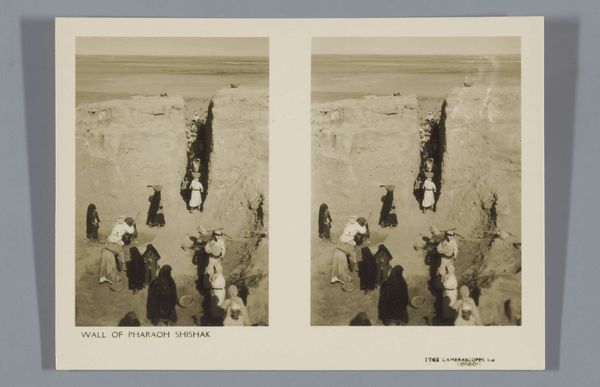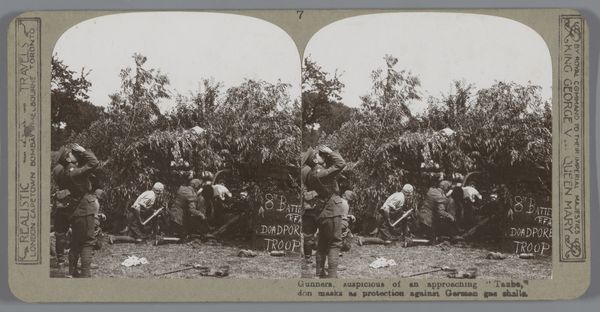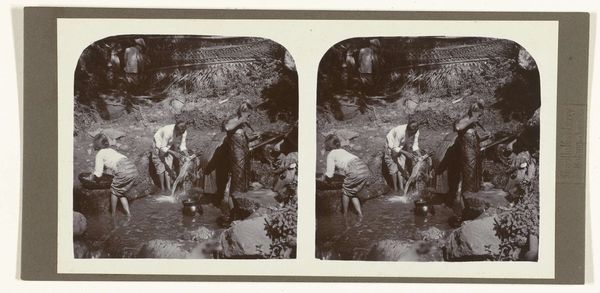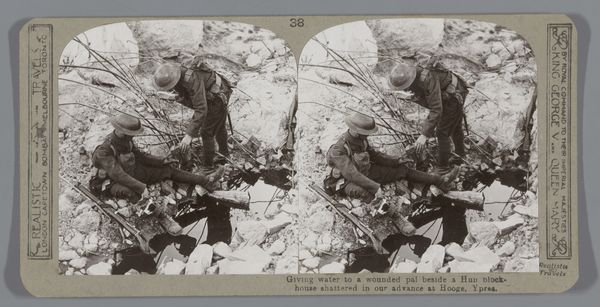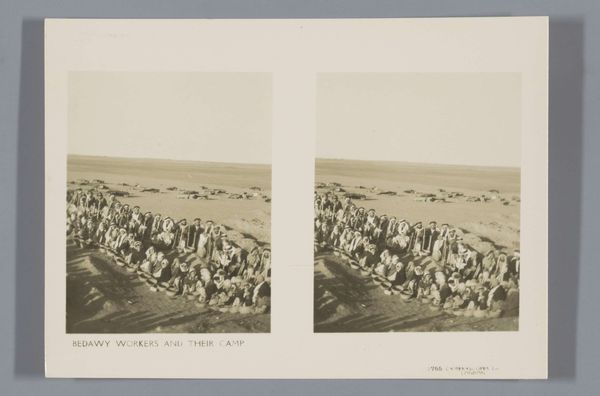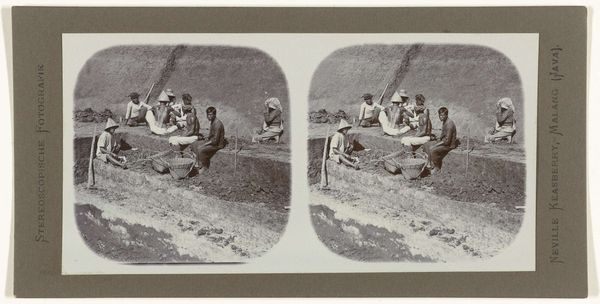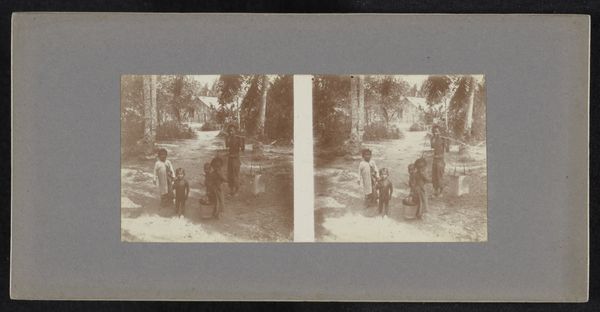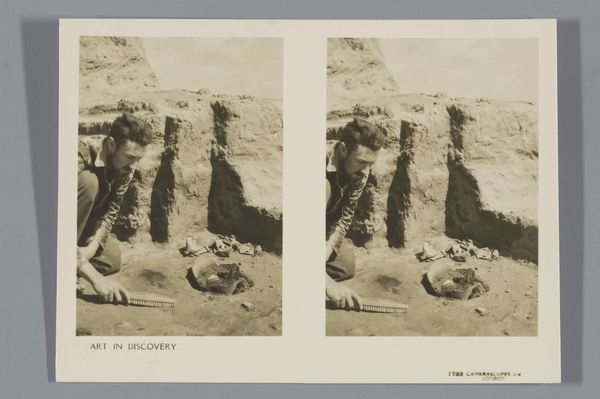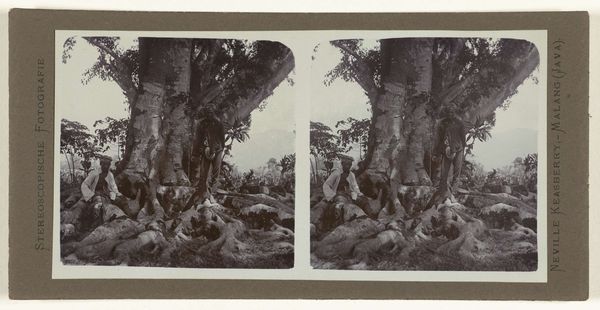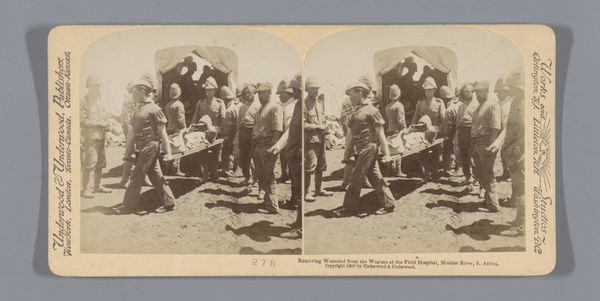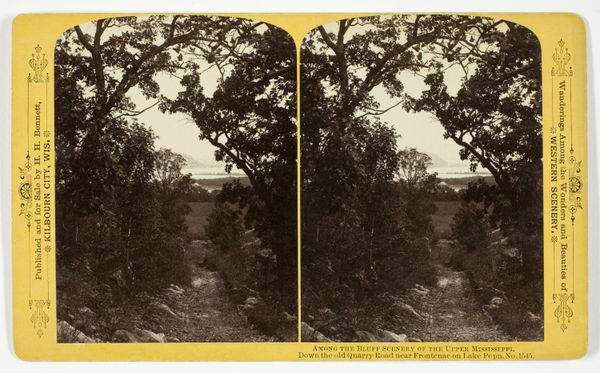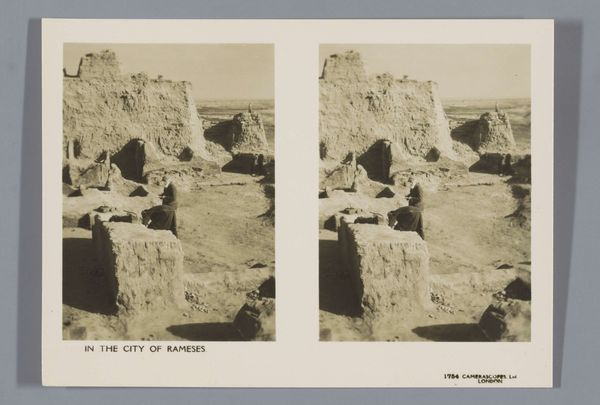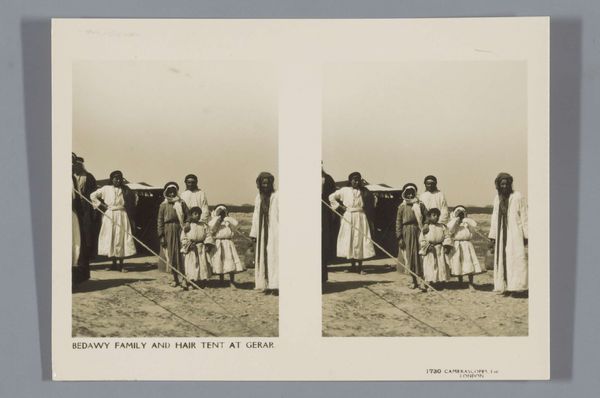
paper, photography, gelatin-silver-print
#
print print-like
#
paper non-digital material
#
pictorialism
#
light coloured
#
landscape
#
paper
#
photography
#
printed format
#
plant
#
gelatin-silver-print
#
realism
Dimensions: height 83 mm, width 115 mm
Copyright: Rijks Museum: Open Domain
Curator: Let’s take a closer look at "Bedoeïene bij opgravingen van de Bijbelse stad Gerar", a gelatin-silver print created around 1929 by Richard St. Barbe Baker. Editor: The sepia tones evoke a sense of timelessness. The composition, divided almost symmetrically, feels deliberate, almost staged, don't you think? Curator: The composition establishes a stark duality between nature and artifice. The repetitive cactus pads offer a structural motif, a rhythm that’s almost unsettling in its formal regularity. What resonates beyond mere representation, isn’t it? Editor: Absolutely. These gelatin-silver prints by Baker—almost like mass produced postcards, recall other historical landscapes printed during archaeological missions, intended for public consumption, meant to showcase not only new finds but also an exotified labor force, perhaps romanticizing or obscuring difficult and potentially violent working conditions. Curator: The very material—gelatin silver—imprints not only light, but also historical weight, bearing a distinct resemblance to documentary projects that often omit labor and environmental ramifications. In essence, it’s a photograph carrying its own constructed history, presenting the Bedouin people within this visual framework. Editor: Precisely. Understanding how labor, specifically, is visualized and consumed via these materials requires scrutinizing photography and printing, its visual grammar as part of colonial infrastructures. Curator: And to appreciate the deeper meanings inherent within this photograph—a study in texture, contrast and visual economy, the tonality creating an emotionally-distant space to analyze visual forms… It almost reveals itself as more concept than reality. Editor: Indeed. Thinking about the material and the context encourages a deconstruction of seemingly benign landscapes into studies in exploitation. Curator: So, beyond its aesthetic qualities and the subject within, there exists an underlying tension, almost allegorical in presentation—prompting inquiry, perhaps questioning surface perception. Editor: Agreed. What appears at first to be a historical photograph reveals itself to be something more complex—a snapshot laden with historical significance on its material origin and construction.
Comments
No comments
Be the first to comment and join the conversation on the ultimate creative platform.
